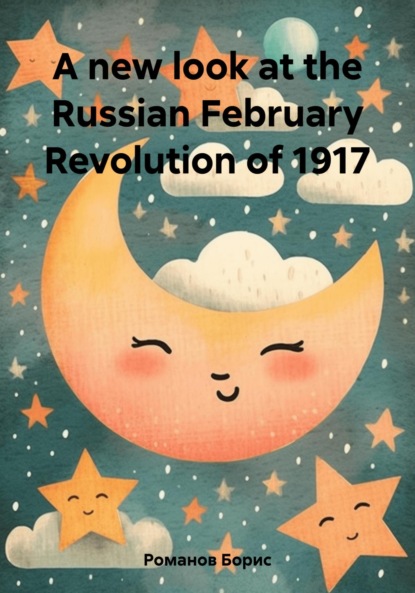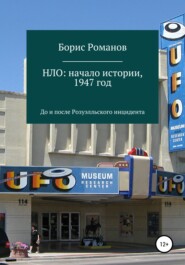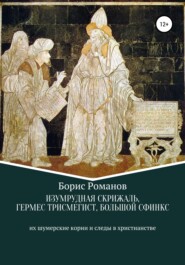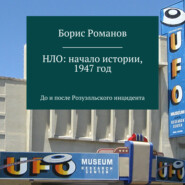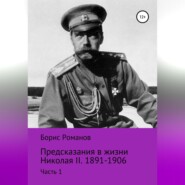По всем вопросам обращайтесь на: info@litportal.ru
(©) 2003-2025.
✖
A new look at the Russian February Revolution of 1917
Настройки чтения
Размер шрифта
Высота строк
Поля
Борис Романов
In this brochure we will try to understand these contradictions and reveal the true reasons for the conspiracy against the last Russian emperor Nicholas II. I decided to present here (briefly) the history of the Russian catastrophe of 1917 according to my big book "The Emperor Who Knew His Fate. And Russia, which did not know "(2012, published by BHV-Petersburg) – by the way, all sources are given in this book (in its third part), and I give these source here too (at the end of the text below).
A new look at the Russian February Revolution of 1917.
In recent years in Russia, there is formed a new look at the causes of the revolution in February 1917 and the fall of the monarchy on March 2, 1917. Of course, the fact that at the end of the First World War four monarchies fell (Russia, Germany, Austria-Hungary and Turkey), this indicates tectonic shifts in world history. However, the revolutions in each of these countries had their own peculiarities. Russia is the only country of the Entente (the camp of the victors), which underwent a revolution and then collapsed – although its resources were the largest among all the warring countries, and the hardships of the war were the least.
In this brochure we will try to understand these contradictions and reveal the true reasons for the conspiracy against the last Russian emperor Nicholas II. I decided to present here (briefly) the history of the Russian catastrophe of 1917 according to my big book "The Emperor Who Knew His Fate. And Russia, which did not know "(2012, published by BHV-Petersburg) – by the way, all sources are given in this book (in its third part), and I give these source here too (at the end of the text below).
Let's begin, of course, with a turning point in the destinies of the world of 1914.
Economy and level of life in Russia by 1914.
By the beginning of the First World War, Russia was among the five most developed and relatively prosperous countries in the world. Of course, in absolute terms in many respects, Russia lagged far behind the United States, Britain and Germany, but in terms of the growth rates of industry and the economy as a whole came out on top in the world. According to both Western and Russian economists of thouse time, in 20-30 years Russia would be up a hegemon in Europe in all indicators of the national economy. In 1912/13 the famous French economist Edmond Thery get commissioned a survey of the Russian economy on behalf of the French government. Noting remarkable progress in all areas, Thery concluded: "If the affairs of the European nations will go from 1912 to 1950 in the same way as they went from 1900 to 1912, Russia will dominate Europe in the middle of the current century both in political and economic so and financially." In his book "The Economic Transformation of Russia" [113], he summed up Russia's astounding successes in all areas: "There is no need to add that no people in Europe can boast of such results."
The standard of living of the Russian workers by 1914 was no worse than the standard of living of workers in the most developed countries of Europe, and was approaching the standard of living of workers in the United States [111] [112]. Literacy of the population in 1914 still lagged far behind the developed countries of Europe and the USA (literacy of recruits was about 75%) [15], but the enrollment of schoolchildren with elementary education was growing rapidly, and by 1917 in the European part of Russia, among boys the coverage were already approaching to 90 %. [98] Higher and secondary education in Russia in terms of level and coverage were no worse than in Europe, and in the field of technical education and better. [98] Training in comparison with the countries of Europe or the United States was inexpensive. The proportion of students from workers and peasants increased every year, and by 1917 was comparable to the level of the 1970s in the USSR. [24] Rapid development in the early twentieth century there were and the formation of peasants in agricultural technology and collective cooperation.
Stolypin's reforms, contrary to Soviet myths, did not come to naught after the death of Stolypin (in 1911), and just by the beginning of the First World gave their main fruits. [39] During the period of the WWI, the standard of living of peasants grew even more strongly (thanks to military supplies). Agricultural and credit cooperation also developed rapidly, and by 1917, according to the level of cooperation in agriculture, Russia was the first in Europe. [40]
The political system of Russia after 1906 was a Duma monarchy (close to the constitutional monarchy). Since June 1907, the electoral law was close to English, but the emperor in this Duma monarchy had much greater rights than the English queen (but much smaller than Putin in Russia, especially after 2012).
Freedom of speech, press, rallies and demonstrations were real, as was the multiparty system. Social insurance and working legislation, according to the American President Taft, were the best in the world at that time. [18] [75] Trade unions developed and strengthened rapidly. Courts were really independent (since the 70-ies of the XIX century). The number of officials per capita was less than in the developed countries of Europe (and much less than immediately after 1917 in the Soviets-USSR) [68] [82]
Of course, at the beginning of the twentieth century the situation of workers in all developed countries still left much to be desired, but in Russia after 1917 it became much worse than under Nicholas II (the standard of living of workers and peasants was restored by the end of the NEP (by 1927), but then again began to fall and reached a minimum in 1940 (the workers – twice as bad as 1913, the peasants – and much lower and worse). [87] The working conditions of the workers in the USSR were worse than in tsarist Russia right up to the beginning of the mass Housing construction under Khrushchev (in the late 1950's). [27] [46] During twenty years of government of Nicholas II the population of the empire increased by more than fifty million people – by 40%, the natural increase of the population exceeded three million a year.In addition to the natural increase, the general level of well-being increased significantly: for example, deposits in state savings banks increased from three hundred million in 1894 to two billion rubles in 1913. [79]
Вы ознакомились с фрагментом книги.
Приобретайте полный текст книги у нашего партнера:
Приобретайте полный текст книги у нашего партнера:





